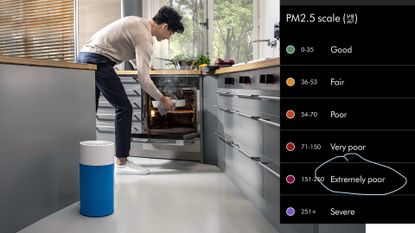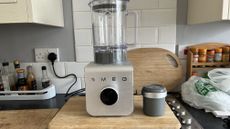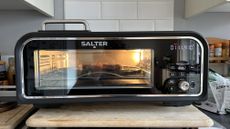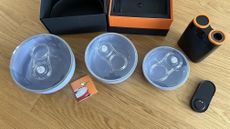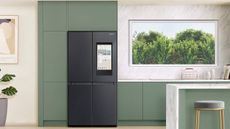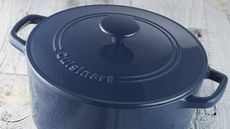Air purifiers are massively popular right now, post-Covid. Can we say 'post-Covid' yet? Okay, let's go with 'during Covid'. People have been stuck at home, and they are naturally more worried about their health than usual. It's a perfect storm for air purifier brands to cash in on and, to their credit, they assuredly have.
Lately, even I’ve been thinking about the air in my home a lot more than I used to, but it is as a result of using air purifiers. This is the opposite way around to how it's meant to work.
Technology is a wonderful thing, but it can sometimes lead you to try to fix problems that you never previously even knew you had. Dyson, for instance, has made a fortune from this very approach.
So anyway, late last year, I began reviewing air purifiers – lucky me, huh? Prior to having to grind out 1,000 words on these things, I had near zero interest in the ‘purity’ of my home air. I don’t have a wood burner, or live next door to a chemical plant – although I do live in central London, which is sort of like an enormous chemical plant that I share with 9 million other people.
However, I’ve never had allergies or respiratory problems, thankfully, and as far as I can tell, my flat doesn’t stink. I’ve also never seen any real evidence that air purifiers have significant health benefits. Sure, they clean up the air, but they can’t claim to make you quantifiably healthier or to live longer.
The good news is air purifiers do have obvious benefits for allergy sufferers. The even better news is that because of my job, I can get sent an unlimited number of them to try out. But the bad news is, after six months of living with a growing quantity of increasingly sophisticated air purifiers, I have become a nervous wreck, obsessed with the quality of my air.
- Hey everyone, here is a list of the best air purifiers – how serendipitous!
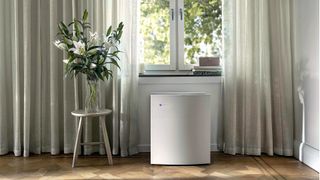
Some of these things are quite big, too
Partly, this is because it is very hard to ‘review’ an air purifier unless you live in a laboratory. Modern air purifiers detect airborne foulness, suck it up and destroy it, then go back to reading their book, or whatever. But how do you know they are accurately detecting pollutants and allergens, and how do you know they aren’t lying to your face about having cleaned it up?
To catch out these slovenly muck suckers, I hit upon the rather excellent wheeze of placing several air purifiers in the same room. So when purifier #1 claimed to have cleaned the air, I could check the pollution sensors on purifier #2, and confirm if it was telling me the truth or fibbing. But then how could I be sure purifier #2 was accurate.
So pretty soon, I had three purifiers, including one that claimed to suck up and incinerate bacteria as well. This made me concerned that my home was not merely rank with pollutement, but also a vile and enormous petri dish, loaded with germs and viruses.
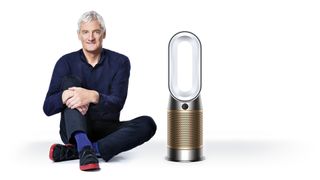
Not now James, I'm busy
I then heard of the new Dyson Pure Hot + Cool Formaldehyde. Here was a new thing to be worried about. Before this innovation arrived, I thought you were only in danger from formaldehyde if you worked as an embalmer or in the studio of Damien Hirst, but it turns out our homes are awash with the stuff, and it is not good for you.
My apartment has one of those large front rooms that has been co-joined to the kitchen. That means there is both plenty of space, and also plenty of opportunity to fill the room with cooking and cleaning product fumes. I don’t have a pet but I do have a boyfriend who sheds a lot of hair and never tidies up, so there are plenty of allergens and pollutants to reckon with.
Surely, air pollution was not only limited to the kitchen/lounge zone, though? So now I moved up to five air purifiers, with one in the bedroom and one in the hallway, just in case.
Having gone well down the road to full-on air purifier mania by this point, I also started to pay attention to the ‘air comfort’ reading on my Tado smart thermostat.
This maps the temperature and humidity of your rooms, using a dot on a sort of ‘target’ graphic. If the room is too cold, the dot starts heading south. Too dry, it veers west. The goal, then, is to get the dot in the target bullseye, for air that is ‘just right’.
Noting that my front room tended to excessive dryness, I brought in a humidifier as well. Then I got worried that the air would become too humid and considered getting a dehumidifier. But I decided that was just ridiculous.

This guy is totally chill about his air quality
The bitter irony is that, when I'm writing about air purifiers, I always recommend you set them on auto and then never think about them again. Let them do their thang, and chill out, guy.
However, not for the first time, I’ve here completely failed to take my own advice. My burgeoning purifier army all have apps, and via them, I now simply must know the state of my air, at all times. I’ve become the sort of dad-like person who bursts into the front room yelling, ‘The air has become foul!’ at my partner, while suspiciously sniffing the air, and turning all the machines up to their maximum settings.
The net result of all this air purifying? My physical health is exactly the same – I didn't have allergies or respiratory problems before, and I still don't. My mental health is perhaps slightly deteriorated, and there is about £2,000-worth of bulky air-processing equipment clogging up my living space.
Thank you, technology. Thank you so much.

Check out the handle on THAT
Samuel Groves Tri-Ply Stainless Steel Non-Stick frying pan recently picked up a five-star review from T3. Well, it was from me really, since I wrote it.
The brand has been making cookware in Birmingham for over 200 years, and has top chef and extreme dieter Tom Kerridge on board for a range of pans bearing his name. I've tried the saucepan sets and non-stick pans and they are truly joy-sparking bits of kit that feel more desirable than Le Creuset, while costing, on average slightly less. What more could you ask?
The thick, premium steel used in their construction immediately inspires confidence. Just pick one up and you can tell it's the real deal. The pans are also also styled as elegantly as is possible, given that they are essentially big slabs of metal with handles on.

Samuel Groves: purest pan porn
The signature, curved handle makes the pans easy to lift and manipulate on the hob, despite their agreeable heft. Where there are lids, they fit snugly. They look great hanging on a hook, Nigella-style, and on the hob, and they're also oven-proof to unusually high temperatures.
Sure, you could get equivalent products from Tefal or Greenpan for way less, and probably be perfectly happy with it. But if you really love cooking – the sizzle, the smells, the… stuff – and you have the necessary dosh, why wouldn't you treat yourself to something nicer? Cooking – and eating – is meant to be a feast for the senses, not a mechanical exercise done in between visits to the toilet.
Paying a bit more should also mean getting pans that last longer. A lifetime, in fact, in the case of pans without non-stick. This is another area where Samuel Groves goes above and beyond the norm, however.
The surface used on Samuel Groves' non-stick pans seems very tough, but anyone with long experience of non-stick knows that it never lasts forever. In general I'd expect 3-5 years of optimum use and up to 10 years of slightly crappier, stickier, but still usable 'non-stick'.
That's where Samuel Groves' other trump card comes in. Their Pan For Life guarantee means they will actually resurface your non-stick pan when the coating starts to wear. They also promise to replace worn rivets – although looking at those rivets, it is hard to imagine them ever coming loose – and even re-polish the pan so it looks good as new.
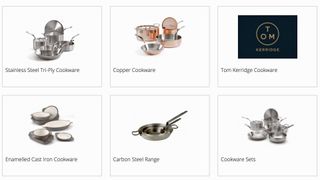
Phwoar
The non-stick pans are also a kind of gateway drug to Samuel Groves' more pro ranges. As well as stainless steel pans, they do carbon steel and copper, as well as the aforementioned Tom Kerridge range. I often find myself looking wistfully at their website, contemplating expanding my already enormous cookware collection even further.

Also better than Le Creuset…
The cast iron casserole is perhaps the most classique Le Creuset piece, but Samuel Groves does not make one of those, although it does make some very pleasing-looking steel casseroles. However, I have bad news for Le Creuset on this front as well: I prefer their Gallic rival Staub's 'cocottes' to Le Creuset's 'Dutch ovens'. Mais oui!
Not only are Staub's pots even more expensive then Le Cruze, and therefore better, they also look more handsome and feel even more hefty. The name 'cocotte' is also an old French slang term for 'prostitute', although I am assured that is mere coincidence. Either way, what's not to like?
Samuel Groves, by contrast, is generally slightly cheaper than Le Creuset. For instance their 26cm non-stick, tri-ply steel pan is £125, where LC's 24cm one is £130. Add up the lower price, better looks and studier build and you have a true 'Le Creuset killer'.
• The full range of cookware is available direct from Samuel Groves. There's also a Samuel Groves selection at John Lewis & Partners and at Selfridges.
